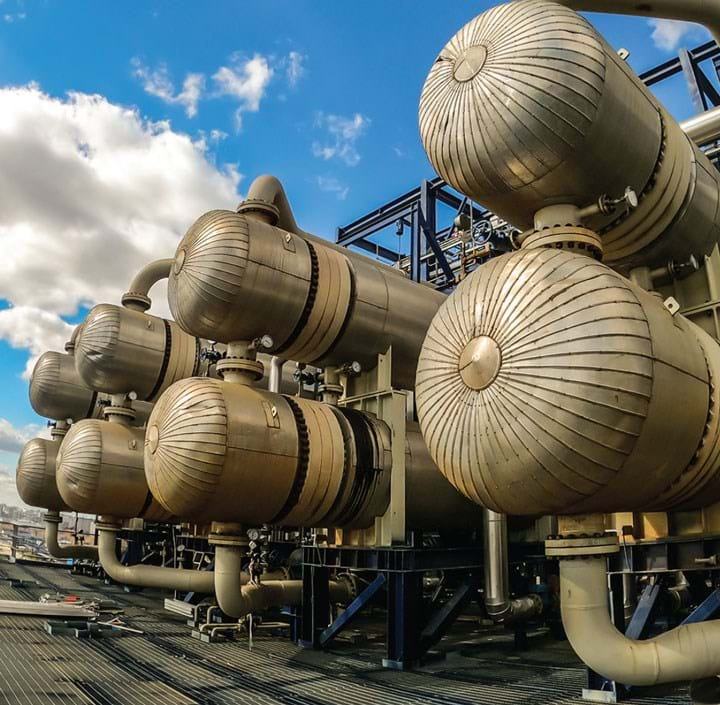Understanding Heat Exchanger Parts: A Comprehensive Guide

Strong 8k brings an ultra-HD IPTV experience to your living room and your pocket.
Heat exchangers play a crucial role in various industrial processes, ensuring efficient heat transfer between fluids. This article will delve into the intricate world of heat exchanger parts, exploring their functions, types, and the significance they hold in diverse applications.
The Basics of Heat Exchangers
Heat exchangers are devices designed to transfer heat between two or more fluids while keeping them physically separated. They are integral in heating, cooling, and energy recovery processes across industries. Understanding the fundamental principles of heat exchangers is crucial before delving into the specifics of their parts.
Types of Heat Exchangers
Heat exchangers come in various types, each catering to specific applications. Common types include shell and tube, plate, and finned tube heat exchangers. This section will provide a detailed overview of these types, highlighting their unique designs and functionalities.
Components of a Heat Exchanger
Breaking down a heat exchanger, we find several key components responsible for its operation. These include:
Tubes and Tubesheets
The tubes and tubesheets form the core structure of many heat exchangers. Tubes facilitate the flow of fluids, while tubesheets provide support and maintain separation between the fluids.
Shell
In shell and tube heat exchangers, the shell encompasses the tubes and contains one of the fluid streams. The design and material of the shell influence the overall efficiency of the heat exchanger.
Plates
Plate heat exchangers consist of multiple plates arranged in layers. These plates enhance heat transfer and allow for compact designs, making them suitable for various applications.
Fins
Finned tubes increase the surface area available for heat transfer, improving the overall efficiency of the heat exchanger. This section will explore the different types of fins and their impact on performance.
Heat Exchanger Parts in Detail
With an understanding of the basic components, let's delve deeper into the specifics of each part.
Tube Materials
The material of the tubes is crucial, as it affects the heat exchanger's durability and performance. Common materials include stainless steel, copper, and aluminum. This section will discuss the properties of each material and its suitability for various applications.
Gaskets and Seals
Gaskets and seals ensure a tight and secure connection between components, preventing leakage and cross-contamination. The choice of gasket material is critical and depends on the fluids being processed.
Baffles
Baffles are used to direct the flow of fluids within the heat exchanger, optimizing heat transfer. Understanding the role of baffles in different designs is essential for efficient heat exchanger operation.
Expansion Joints
In applications where temperature variations are significant, expansion joints accommodate thermal expansion and contraction, preventing damage to the heat exchanger.
Header and Distributor
Headers and distributors manage the flow of fluids into and out of the heat exchanger. Proper design and maintenance of these components are vital for balanced fluid distribution and optimal performance.
Maintenance and Troubleshooting
Like any mechanical system, heat exchangers require regular maintenance to ensure longevity and efficiency. This section will provide insights into preventive maintenance practices and common troubleshooting issues associated with heat exchanger parts.
Cleaning Procedures
Accumulation of fouling and deposits can significantly impact heat exchanger performance. This subsection will outline effective cleaning procedures for different types of heat exchangers.
Common Issues and Solutions
Explore common problems such as corrosion, tube fouling, and flow imbalances, providing practical solutions to address these issues and maintain optimal heat exchanger performance.
Applications and Innovations
Highlighting the versatility of heat exchangers, this section will delve into their applications across industries and showcase recent innovations in heat exchanger technology.
Industrial Applications
Discuss the role of heat exchangers in industries such as petrochemical, HVAC, power generation, and food processing, emphasizing their varied applications.
Advancements in Heat Exchanger Technology
Explore recent innovations and advancements in heat exchanger design and materials, showcasing how these developments are improving efficiency and sustainability.
Conclusion
Heat exchangers are indispensable in modern industrial processes, playing a vital role in energy conservation and thermal management. By understanding the intricate details of heat exchanger parts, industries can make informed decisions regarding design, maintenance, and performance optimization, ensuring the longevity and efficiency of these critical components.
Note: IndiBlogHub features both user-submitted and editorial content. We do not verify third-party contributions. Read our Disclaimer and Privacy Policyfor details.





